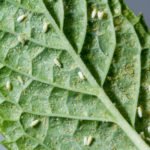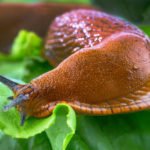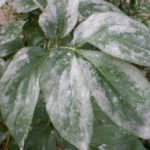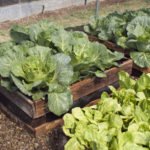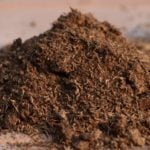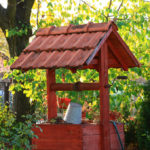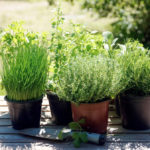At this time, especially wonderful autumn herbs, which are painted in bright purple, lemon and orange colors. Autumn leaves of edible herbs can to decorate a table, especially if it fruits or vegetables. Spectacular color in autumn turn the leaves of the carrots that decorate salads and bright red strawberry leaves, decorate the vase with apples and pears.
Vegetable garden
With freed from the crop beds remove all plant residues – the more they will remain on the site, the more likely it will be visited by mice and other rodents. With them, by the way, continue to fight, otherwise under threat is the harvest in storage, and the garden, where these animals gnaw the bark of trees and shrubs.
First of all, we dig the soil where we will break the beds for winter sowing. Before digging, evenly distribute the main fertilizer (compost or manure, phosphorus and potassium fertilizers) on the soil surface. For winter beds we use fertile areas of the cottage, protected from the Northern winds, with light, well-warming soil, without depressions, where spring moisture can linger.
Conduct the winter sowing for an early crop of cold-resistant crops: carrots, rutabaga, parsley, parsnip, beet, radish, turnip, and lettuce, Chinese cabbage, onion seed, dill, spinach and others. Note: the sown seeds should not accumulate and germinate in the autumn, so winter crops are carried out when the cold becomes stable.
Divide and plant tarragon, rhubarb, sorrel, marjoram, peppermint, horseradish and other perennial plants.

From the first week of November on the Windows in pots and boxes grow a variety of green crops. Herbs that are easy to grow on the windowsill, will make a variety of winter menu.
In room conditions it is very important to take care of sufficient lighting for plants. Remember that the most suitable are low-pressure fluorescent lamps and high-pressure sodium lamps, whose lighting spectrum is blue and red.

We continue harvesting the roots of medicinal plants: Pimpinella saxifraga, Elecampane, Norwegian angelica, Crambe, Black salsify, Tragopogon porrifolius, Levisticum officinale (from the autumn of the 2nd year), Horseradish Root.
Garden chores
In some regions, tall, spiky or spherical forms of junipers, arborvitae, cypress need to tie a rope to the cold wind bent and broke the branches. Conical forms of trees can get severe sunburn in late winter and early spring. Their crowns are also tied with soft twine, so that in February, when the snow begins to settle, you can easily cover them with burlap or Kraft paper.
If necessary, even transplanted trees and shrubs with a lump of land. We carry out sanitary pruning of berry crops, removing damaged and weakened shoots. We complete the pruning of fruit vines.

You can carry out an eradicating treatment of the garden (5% urea solution) to destroy pests in the wintering stage. After leaf fall nests of Aporia crataegi, Brown-tail moth, Lackey moth and other pests of fruit crops are clearly visible; remove and destroy them.
We harvest rootstocks and cuttings of fruit crops for winter and spring vaccinations and put them in storage at the very bottom of the refrigerator or basement. We also place harvested grape cuttings, actinidia, edible honeysuckle, gooseberries there.
We graft the grafts for grafting after the first small frosts (-5 … -10 ° C), cutting off annual growths of the current year 30-40 cm long. Cut chopped cuttings are bundled, attaching labels indicating the grade and time of harvesting; stored in the basement at a temperature of 3 ° C, falling asleep the lower third of the cuttings with wet sand.
We are completing work on preparing plants for winter: hilling the stands of young trees with earth, tying them with fir spruce branches. In some regions, the first snow is raked to the trunks of trees and compacted in the trunk circles. We also berry bushes spud with snow to protect them from frost. We continue to harvest fallen leaves, digging around the tree trunks of plants, and mulching them.
We take away garden equipment for the winter. We clean and wash the blades of iron shovels, hoes, scoops, cutting parts and bearings of lawn mowers, bearings and bushings of garden carts at the end of work in the country. Then grease them with grease. We wash stainless steel tools from dirt and dry them. Secateurs and garden saws are sharpening now. We put all the equipment in a dry place for storage. What we will need first of all in the spring: a tool for trimming and grafting, a garden var – we put in such a way that it is easy and convenient to get it. We dry and take away the released boxes, covering material and film. We prepare pegs with labels and tags for spring plantings. We carry out an audit of the inventory and determine what will need to be purchased in winter for the next season.
Lawn and pond care
If you have not mulching the lawn, hurry up with this work, especially in the northern regions. Before mulching, we clean the lawn with a fan rake from fallen leaves and garbage. With the help of mulching, small irregularities on the lawn are filled and the upper fertile layer increases. The mixture is composed of:
for clay soils – peat, loam, sand (1: 2: 4);
for loamy soils – peat, loam, sand (1: 4: 2);
for sandy soils – peat, loam, sand (2: 4: 1).
We level the mixture with the back of the rake so that there are no bumps, filling bald spots and shaking off the soil that has fallen on the grass. For uniform distribution of the mixture, all its elements must be dry.
If you have not had time to prepare the pond for winter, you can no longer put it off. It is better to fix the plants that remain to winter in the pond, without forgetting to enter the thermophilic species into the room.






